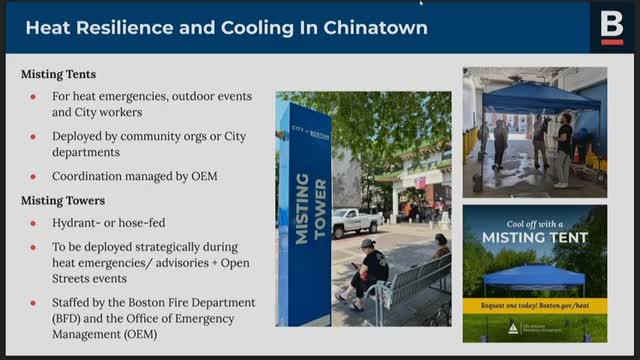Boston Parks Department enhances urban tree canopy through community-focused initiatives
May 09, 2025 | Boston City, Suffolk County, Massachusetts
Thanks to Scribe from Workplace AI , all articles about Massachusetts are free for you to enjoy throughout 2025!

This article was created by AI using a video recording of the meeting. It summarizes the key points discussed, but for full details and context, please refer to the video of the full meeting. Link to Full Meeting
Miesdor highlighted the progress made in District 2, where nearly 200 trees were planted in 2023, followed by an impressive 276 in 2024. This spring, the department plans to add 62 more trees, showcasing a commitment to greening diverse neighborhoods, including South Boston and Chinatown. However, the challenges of urban landscapes were evident. Miesdor noted that areas like downtown and Chinatown present unique obstacles for traditional tree planting methods, necessitating innovative solutions to expand the tree canopy.

Before you scroll further...
Get access to the words and decisions of your elected officials for free!
Subscribe for FreeTransparency and community engagement were central themes in Miesdor's presentation. The Parks Department has developed a tree inventory tool, allowing residents to track tree planting efforts and advocate for green spaces in their neighborhoods. This initiative fosters a collaborative relationship between the city and its residents, ensuring that tree planting aligns with community needs and desires.
The conversation also touched on the importance of partnerships. Miesdor emphasized collaboration with local organizations, such as Speak for the Trees, to direct resources effectively. He acknowledged that while the demand for trees is high, the planting process is gradual and requires careful planning and community support.
In addition to street tree planting, Miesdor discussed capital improvement projects at parks like O'Day Playground and Peters Park, where the department aims to maximize tree planting opportunities. A notable success story emerged from Christopher Lee Park, where community input led to the planting of 12 trees instead of the originally planned three, demonstrating the power of community advocacy.
As the meeting progressed, Miesdor underscored the need for creative solutions to integrate trees into the urban fabric. Following a community walk in Chinatown, the department identified limited traditional planting sites but remained committed to finding alternatives. Collaborating with the Mayor's Office of New Urban Mechanics and the Office of Climate Resilience, the Parks Department is exploring above-ground planters to introduce greenery in challenging areas.
The discussions at this meeting reflect a broader commitment to environmental justice and community resilience in Boston. As the city continues to navigate the complexities of urban forestry, the emphasis on collaboration, transparency, and innovative solutions will be crucial in fostering a greener, more sustainable future for all residents.
Converted from Environmental Justice, Resiliency, & Parks on May 9, 2025 meeting on May 09, 2025
Link to Full Meeting
Comments
View full meeting
This article is based on a recent meeting—watch the full video and explore the complete transcript for deeper insights into the discussion.
View full meeting




